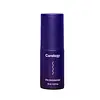What's inside
What's inside
 Key Ingredients
Key Ingredients

 Benefits
Benefits

 Concerns
Concerns

No concerns
 Ingredients Side-by-side
Ingredients Side-by-side

Water
Skin ConditioningDimethicone
EmollientGlycerin
HumectantPropanediol
SolventPolysilicone-11
Cetearyl Olivate
Butylene Glycol
Humectant1,2-Hexanediol
Skin ConditioningSodium Acrylate/Sodium Acryloyldimethyl Taurate Copolymer
Emulsion StabilisingSorbitan Olivate
EmulsifyingPolyisobutene
Carbomer
Emulsion StabilisingAminomethyl Propanol
BufferingCitric Acid
BufferingCaprylhydroxamic Acid
Disodium EDTA
Sodium Hyaluronate
HumectantDimethiconol
EmollientCaprylyl/Capryl Glucoside
CleansingDecyl Glucoside
CleansingWater, Dimethicone, Glycerin, Propanediol, Polysilicone-11, Cetearyl Olivate, Butylene Glycol, 1,2-Hexanediol, Sodium Acrylate/Sodium Acryloyldimethyl Taurate Copolymer, Sorbitan Olivate, Polyisobutene, Carbomer, Aminomethyl Propanol, Citric Acid, Caprylhydroxamic Acid, Disodium EDTA, Sodium Hyaluronate, Dimethiconol, Caprylyl/Capryl Glucoside, Decyl Glucoside
Water
Skin ConditioningGlycerin
HumectantMethyl Methacrylate Crosspolymer
Propanediol
SolventPyrus Malus Fruit Extract
Skin ConditioningPentylene Glycol
Skin ConditioningPolymethylsilsesquioxane
Pseudoalteromonas Ferment Extract
HumectantNiacinamide
SmoothingBambusa Arundinacea Stem Extract
Skin ConditioningDimethicone
EmollientSalix Nigra Bark Extract
Skin ProtectingTamarindus Indica Seed Gum
Emulsion StabilisingSqualane
EmollientHydroxyacetophenone
AntioxidantIsononyl Isononanoate
EmollientHydroxyethyl Acrylate/Sodium Acryloyldimethyl Taurate Copolymer
Emulsion StabilisingAcrylates/C10-30 Alkyl Acrylate Crosspolymer
Emulsion StabilisingGlyceryl Citrate/Lactate/Linoleate/Oleate
EmulsifyingPotassium Hydroxide
BufferingCarbomer
Emulsion StabilisingGlyceryl Caprylate
EmollientGlyceryl Polyacrylate
Tocopherol
AntioxidantPolyglyceryl-3 Caprate
EmulsifyingPolyglyceryl-4 Cocoate
EmollientTrisodium Ethylenediamine Disuccinate
Polysorbate 60
EmulsifyingSorbitan Isostearate
EmulsifyingSodium Salicylate
Preservative1,2-Hexanediol
Skin ConditioningCaprylyl Glycol
EmollientWater, Glycerin, Methyl Methacrylate Crosspolymer, Propanediol, Pyrus Malus Fruit Extract, Pentylene Glycol, Polymethylsilsesquioxane, Pseudoalteromonas Ferment Extract, Niacinamide, Bambusa Arundinacea Stem Extract, Dimethicone, Salix Nigra Bark Extract, Tamarindus Indica Seed Gum, Squalane, Hydroxyacetophenone, Isononyl Isononanoate, Hydroxyethyl Acrylate/Sodium Acryloyldimethyl Taurate Copolymer, Acrylates/C10-30 Alkyl Acrylate Crosspolymer, Glyceryl Citrate/Lactate/Linoleate/Oleate, Potassium Hydroxide, Carbomer, Glyceryl Caprylate, Glyceryl Polyacrylate, Tocopherol, Polyglyceryl-3 Caprate, Polyglyceryl-4 Cocoate, Trisodium Ethylenediamine Disuccinate, Polysorbate 60, Sorbitan Isostearate, Sodium Salicylate, 1,2-Hexanediol, Caprylyl Glycol
 Reviews
Reviews

Ingredients Explained
These ingredients are found in both products.
Ingredients higher up in an ingredient list are typically present in a larger amount.
1,2-Hexanediol is a synthetic liquid and another multi-functional powerhouse.
It is a:
- Humectant, drawing moisture into the skin
- Emollient, helping to soften skin
- Solvent, dispersing and stabilizing formulas
- Preservative booster, enhancing the antimicrobial activity of other preservatives
Carbomer is a polymer of acrylic acid. Its main role is to create a gel consistency.
A high amount of carbomer can cause pilling or balling up of products. Don't worry, most products contain 1% or less of carbomer.
Dimethicone is a type of synthetic silicone created from natural materials such as quartz.
What it does:
Dimethicone comes in different viscosities:
Depending on the viscosity, dimethicone has different properties.
Ingredients lists don't always show which type is used, so we recommend reaching out to the brand if you have questions about the viscosity.
This ingredient is unlikely to cause irritation because it does not get absorbed into skin. However, people with silicone allergies should be careful about using this ingredient.
Note: Dimethicone may contribute to pilling. This is because it is not oil or water soluble, so pilling may occur when layered with products. When mixed with heavy oils in a formula, the outcome is also quite greasy.
Learn more about DimethiconeGlycerin is already naturally found in your skin. It helps moisturize and protect your skin.
A study from 2016 found glycerin to be more effective as a humectant than AHAs and hyaluronic acid.
As a humectant, it helps the skin stay hydrated by pulling moisture to your skin. The low molecular weight of glycerin allows it to pull moisture into the deeper layers of your skin.
Hydrated skin improves your skin barrier; Your skin barrier helps protect against irritants and bacteria.
Glycerin has also been found to have antimicrobial and antiviral properties. Due to these properties, glycerin is often used in wound and burn treatments.
In cosmetics, glycerin is usually derived from plants such as soybean or palm. However, it can also be sourced from animals, such as tallow or animal fat.
This ingredient is organic, colorless, odorless, and non-toxic.
Glycerin is the name for this ingredient in American English. British English uses Glycerol/Glycerine.
Learn more about GlycerinPropanediol is an all-star ingredient. It softens, hydrates, and smooths the skin.
It’s often used to:
Propanediol is not likely to cause sensitivity and considered safe to use. It is derived from corn or petroleum with a clear color and no scent.
Learn more about PropanediolWater. It's the most common cosmetic ingredient of all. You'll usually see it at the top of ingredient lists, meaning that it makes up the largest part of the product.
So why is it so popular? Water most often acts as a solvent - this means that it helps dissolve other ingredients into the formulation.
You'll also recognize water as that liquid we all need to stay alive. If you see this, drink a glass of water. Stay hydrated!
Learn more about Water